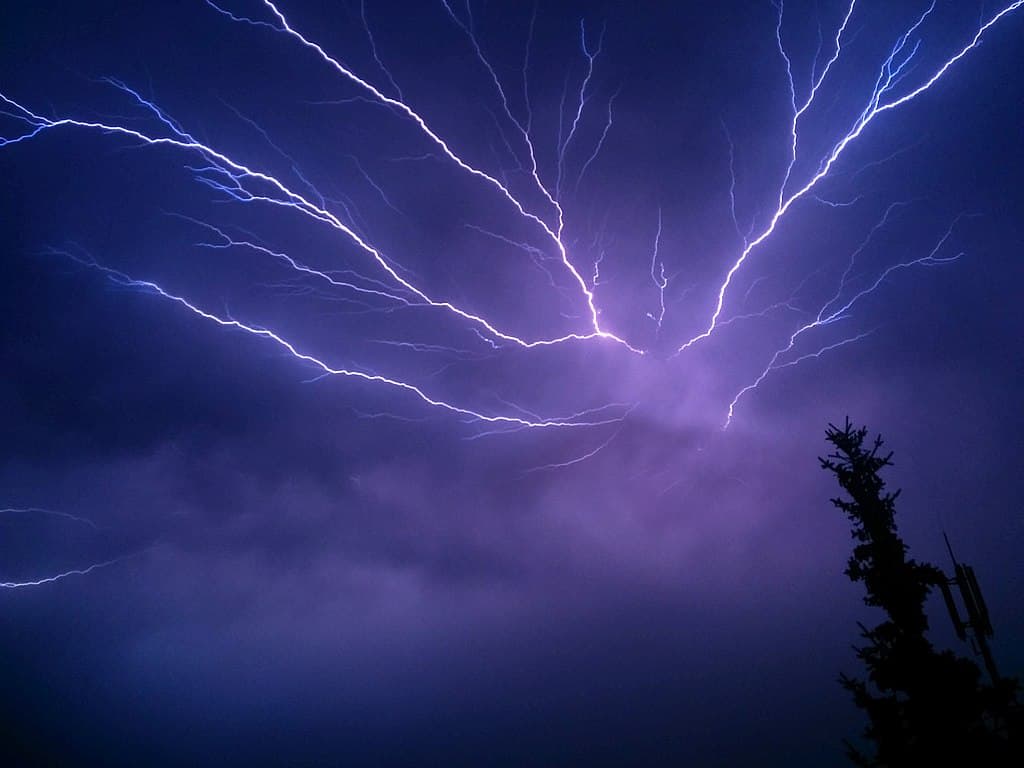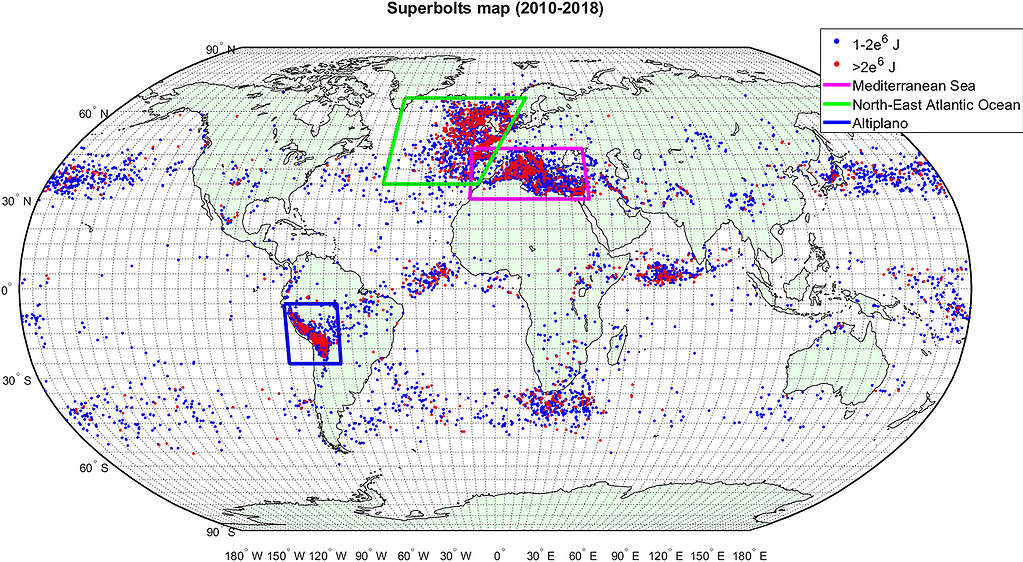A superbolt, a rare and very powerful form of lighting that is poorly understood by scientists, is more likely to strike the closer a storm cloud’s electrical charging zone is to the land or ocean surface. According to the new study, these conditions explain why superbolt hotspots occur above some oceans and tall mountains, the researchers said.

Superbolts account for less than 1% of all lighting, but when they strike, they make a big impact. While an average lighting bolt has about 300 million volts, superbolts are 1,000 times stronger and can cause major damage to infrastructure and ships. They have had scientists scratching their heads since the late 1970s when they were first identified as distinct.
A study in 2019 found superbolts tend to cluster over the Mediterranean Sea, over the Altiplano in Peru and Bolivia, one of the tallest plateaus on Earth, and over the Northeast Atlantic Ocean. Now, an international team of researchers has provided the first explanation for the formation and distribution of superbolts over land and sea.
“Superbolts, even though they’re only a very, very tiny percentage of all lightning, they’re a magnificent phenomenon,” Avichay Efraim, a physicist from Israel and lead author of this study, said in a news release. “We wanted to know what makes these powerful superbolts more likely to form in some places as opposed to others.”
How do superbolts form?
Storm clouds extend from 12-18 kilometers in altitude and cover a broad spectrum of temperatures. However, for lightning to occur, a cloud must straddle the boundary where the air temperature drops to the freezing point of water. Electrification and cloud charging occur above this freezing line in the higher regions of the cloud.
The researchers wondered whether changes in freezing line altitude, and subsequently charging zone height, could influence a storm’s ability to form superbolts. Previous studies looked at whether superbolt strength could be affected by sea spray, ocean salinity and desert dust. However, the studies were limited to regional bodies of water.

In order to understand the clustering of superbolts in specific regions, Efraim and his team gathered essential data on lightning strikes, including time, location, and energy, using a network of radio wave detectors. Using this data, they extracted characteristics from the surrounding storm environments, such as land and water surface elevations.
Researchers looked at links between each of these variables and the intensity of superbolts, aiming to discern the factors that contribute to stronger lightning. They found that aerosols didn’t have a big effect on superbolt strength. Instead, a smaller distance between the charging zone and the land or water surface meant stronger lighting.
Storms near the surface allow these bolts to form because a shorter distance generally means less electrical resistance and a higher current. And higher current means stronger lightning bolts. The regions known for having the most superbolts have one thing in common — short gaps between lighting charging zones and surfaces.
“This is a major breakthrough for us,” Efraim said in a news release. Knowing that a short distance between the surface and the charging zone leads to more superbolts will help to determine how changes in climate may affect the occurrence of superbolt lighting in the future.
“We’ve found a big piece of the puzzle,” Efraim said.
The study was published in the journal Advancing Earth and Space Sciences.









